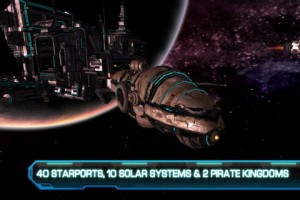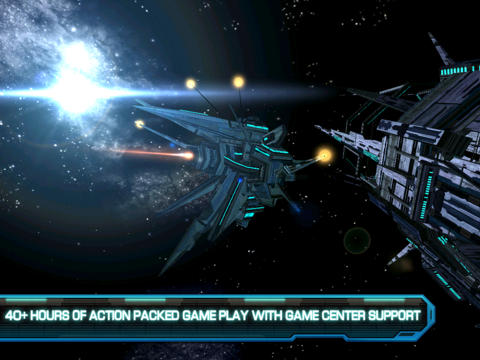

Once a destination is selected from the celestial sphere or on a star map, the player’s fleet warps directly there within seconds. The player’s fleet parks outside the current space station until he or she taps on the station to dock and do some shopping, or pans around and taps on a destination elsewhere in the current star system. Whereas Galaxy on Fire lets players travel freely through the cosmos, GPA handles navigation on a strict point-to-point basis. However, the execution is very different here.


In both, the player uses a star map to visit space ports and accept quests for quick cash or resources, hoping to save up for that shiny new starship sitting behind a shop window. GPA easily draws comparison to the Galaxy on Fire series due to its overall structure. For better or worse GPA’s appeal must rest on the depth of its gameplay - and it’s certainly got plenty of that! Characters get their point across but dialogue is basic and lacking characterization at best, and sometimes it feels grammatically unnatural to the native English speaker. The head honcho of one such operation, a Galaxy Pirate King, has decided it’s high time to turn his son loose with a laser-equipped starship so he can learn the tricks of the trade in a Galaxy Pirate Adventure ( Out Now, $4.99)! It seems this should be a perfect setup for a grand space opera, but sadly GPA’s story didn’t quite make it across the translation barrier. In a distant future the galaxy is split into lawless pirate fiefdoms, entire economies based on the practice of seizing and trading lightly defended cargo.

For a list of these, see “Addendums” below the original review score at the end of the article.) Since then, one or more major critiques have been addressed by the developer. ( Editor’s Note: What follows is the original review written for the first version the author played.


 0 kommentar(er)
0 kommentar(er)
